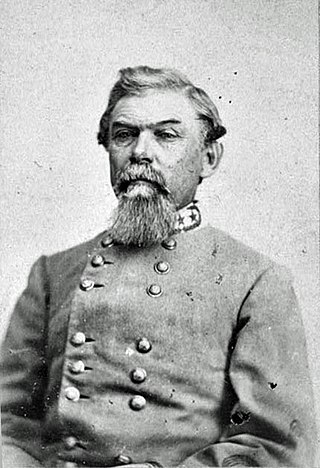
William Joseph Hardee was a career U.S. Army and Confederate States Army officer. For the U.S. Army, he served in the Second Seminole War and in the Mexican–American War, where he was captured and exchanged. In the American Civil War, he sided with the South and became a general. Hardee served in the Western Theater and quarreled sharply with two of his commanding officers, Braxton Bragg and John Bell Hood. He served in the Atlanta Campaign of 1864 and the Carolinas Campaign of 1865, where he surrendered with General Joseph E. Johnston to William Tecumseh Sherman in April. Hardee's writings about military tactics were widely used on both sides in the conflict.
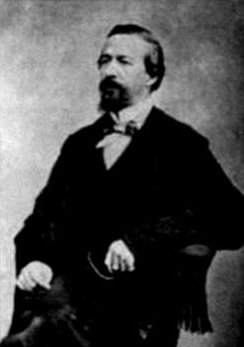
William Wirt Adams (1819–1888) was a banker, planter, state legislator, and a Brigadier General in the Confederate States Army.

Florida participated in the American Civil War as a member of the Confederate States of America. It had been admitted to the United States as a slave state in 1845. In January 1861, Florida became the third Southern state to secede from the Union after the November 1860 presidential election victory of Abraham Lincoln. It was one of the initial seven slave states which formed the Confederacy on February 8, 1861, in advance of the American Civil War.
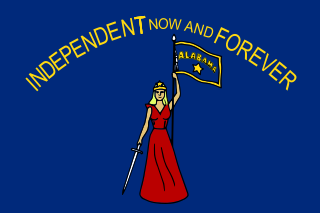
Alabama was central to the Civil War, with the secession convention at Montgomery, birthplace of the Confederacy, inviting other states to form a Southern Republic, during January–March 1861, and develop constitutions to legally run their own affairs. The 1861 Alabama Constitution granted citizenship to current U.S. residents, but prohibited import duties (tariffs) on foreign goods, limited a standing military, and as a final issue, opposed emancipation by any nation, but urged protection of African slaves, with trial by jury, and reserved the power to regulate or prohibit the African slave trade. The secession convention invited all slaveholding states to secede, but only 7 Cotton States of the Lower South formed the Confederacy with Alabama, while the majority of slave states were in the Union. Congress voted to protect the institution of slavery by passing the Corwin Amendment on March 4, 1861, but it was never ratified.
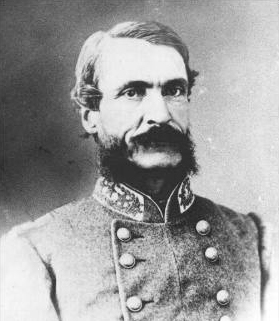
James Patton Anderson was an American slave owner, physician, lawyer, and politician, most notably serving as a United States Congressman from the Washington Territory, a Mississippi state legislator, and a delegate at the Florida state secession convention to withdraw from the United States. He also served in the American Civil War as a general in the Confederate States Army, serving in the Army of Tennessee.

The 1st Alabama Cavalry Regiment was a cavalry regiment recruited from Southern Unionists that served in the Union Army during the American Civil War. It was the only predominantly-white Union regiment from Alabama. Of the 2,678 white Alabamians who enlisted in the Union Army, 2,066 served in the 1st Alabama Cavalry.
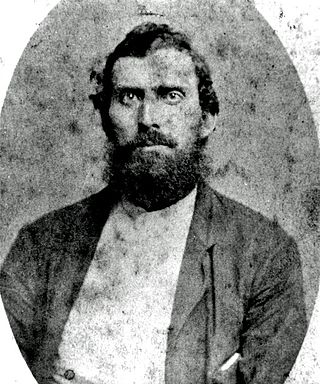
In the United States, Southern Unionists were white Southerners living in the Confederate States of America opposed to secession. Many fought for the Union during the Civil War. These people are also referred to as Southern Loyalists, Union Loyalists, or Lincoln's Loyalists. Pro-Confederates in the South derided them as "Tories". During Reconstruction, these terms were replaced by "scalawag", which covered all Southern whites who supported the Republican Party.

Henry DeLamar Clayton, Sr. was a prominent Alabama attorney, politician, Redeemer judge, and college president. He also served as a major general in the Confederate Army during the American Civil War, commanding a division in the Army of Tennessee in the Western Theater.

The Prattville Dragoons were a company of men from the city of Prattville, and Autauga County, Alabama, organized for Confederate service during the American Civil War of 1861-1865.
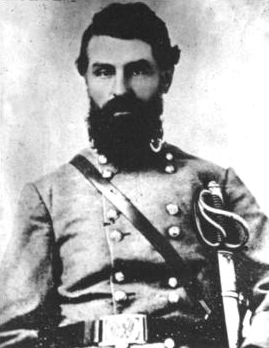
Sterling Alexander Martin Wood commonly referred to as S.A.M. Wood, was an American lawyer and newspaper editor from Alabama. He served as a Confederate general during the American Civil War until 1863, and resumed practicing law, served as a state legislator, and later taught law.
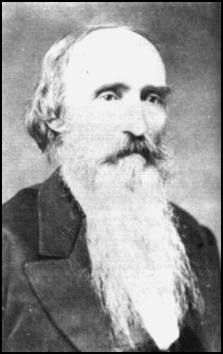
Claudius Wistar Sears was a United States Army officer, an educator, and a Confederate general during the American Civil War.
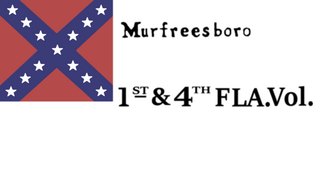
The 1st Florida Cavalry Regiment was a Confederate army unit during the U.S. Civil War, originally organized in July 1861 at Tallahassee. Members of the regiment came primarily from Alachua, Clay, Columbia, Duval, Leon, Levy, Nassau and Suwannee counties. It left for the western theater in 1862.

James Holt Clanton was an American soldier, lawyer, legislator, and was later also a Confederate combatant. He enlisted in the United States Army for service during the Mexican–American War, and later was a Confederate Army brigadier general during the American Civil War. Following the war he returned to practicing law and later was murdered in a private feud in Tennessee.

The 3rd Florida Infantry Regiment was an infantry regiment that fought for the Confederacy in American Civil War. The regiment was formed in the summer of 1861 and served until it surrendered in 1865.

The 9th Arkansas Infantry Regiment was a regiment of the Confederate States Army during the American Civil War. It served in the Western Theater, seeing action in the Vicksburg, Tennessee and Georgia campaigns. Due to attrition; the 9th Arkansas was consolidated several times with other Arkansas regiments, finally merging in 1865 into the 1st Arkansas Consolidated Mounted Rifles.
The following list is a bibliography of American Civil War Confederate military unit histories and are generally available through inter-library loan. More details on each book are available at WorldCat. For an overall national view, see Bibliography of the American Civil War. For histories of the Union, see Bibliography of American Civil War Union military unit histories. For a guide to web sources see: Carter, Alice E.; Jensen, Richard. The Civil War on the Web: A Guide to the Very Best Sites—Completely Revised and Updated (2003).
In general the bibliography of the American Civil War comprises over 60,000 books on the war, with more appearing each month. There is no complete bibliography to the war; the largest guide to books is over 40 years old and lists over 6,000 titles selected by leading scholars. The largest guides to the historiography annotates over a thousand titles.

The 1st Florida Infantry Regiment was an infantry regiment raised by the Confederate state of Florida during the American Civil War. Raised for 12 months of service its remaining veterans served in the 1st (McDonell's) Battalion, Florida Infantry from April 1862 on. In August the depleted battalion was consolidated with the 3rd (Miller's) Battalion into the reorganized 1st Florida Infantry Regiment again. In December 1862 it merged with the 3rd Florida Infantry Regiment and received the form it kept till the war's end as the 1st and 3rd Consolidated Florida Infantry Regiment. Fighting as part of the Army of Tennessee in the Western Theater of the American Civil War it was surrendered on April 26, 1865.

The Republican Blues were a military company formed in Savannah, Georgia. The Blues were first organized in 1808 and served at Fort Jackson and in Florida during the War of 1812. The Blues, typical of Savannah's old military units, were a fraternal social organization and a well-trained military unit. The Blues defended Georgia's coast from the Union Navy between 1861 and 1864. Unlike most Confederate units formed during the Civil War, the Republican Blues had been an existing militia organization for over fifty years before the war started. They recruited from the most prominent families in and around Savannah. They fought in all the nations wars after The Civil War as part of the Georgia National Guard, with the lone exception being The Spanish–American War. Today they remain in service, as a modular artillery brigade of the Georgia Army National Guard, the 118th Field Artillery.

The Jacksonville Light Infantry were a militia unit organized on April 30 of 1859 in Jacksonville, Florida. The unit fought for the Confederacy during the American Civil War as well as with the U.S. Army during the Spanish–American War and World War I.


















